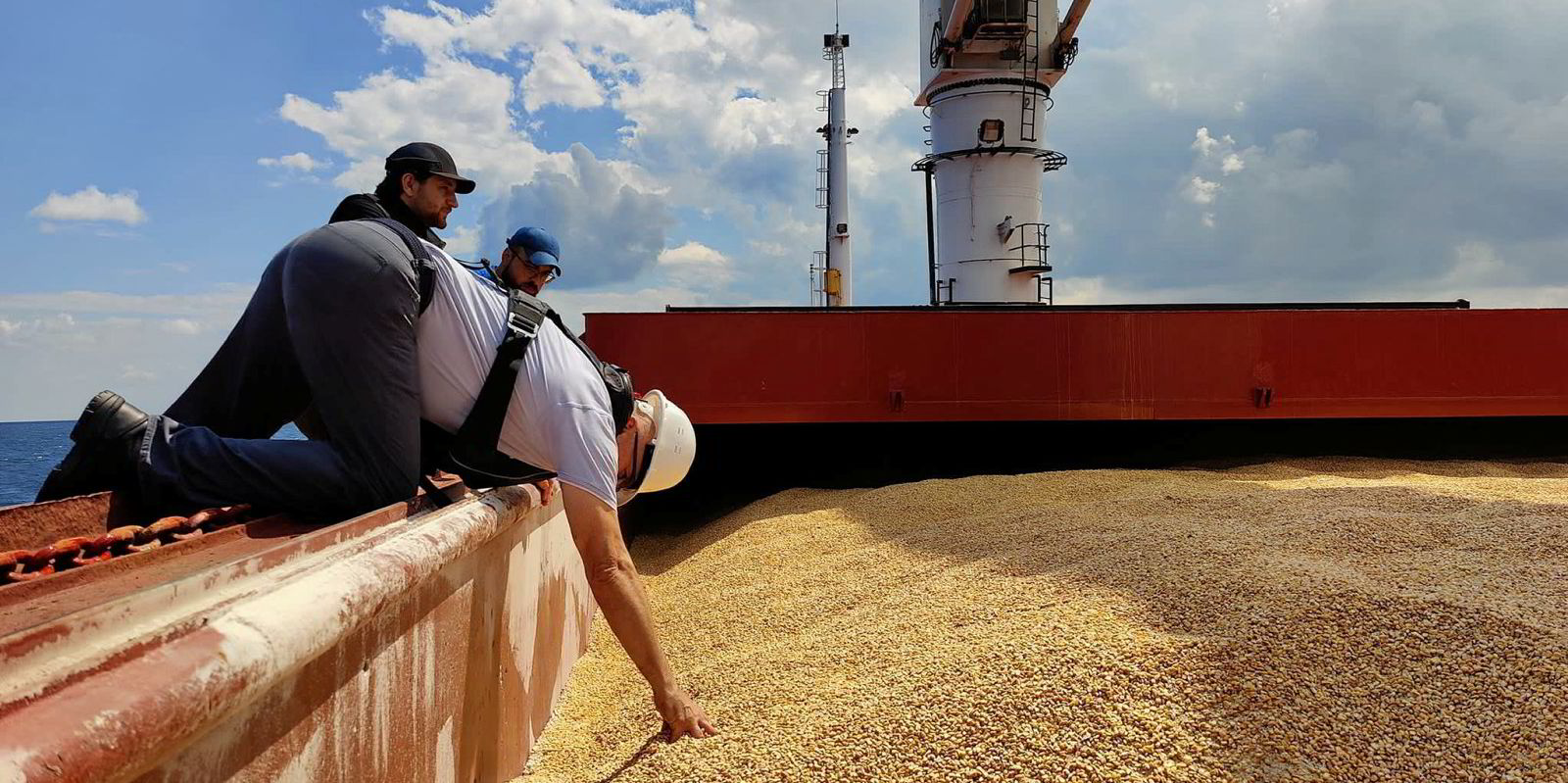It is finally happening — but slowly. The grain trade in Ukraine is grinding into life with support from big traders and aid cargoes that will make their way to countries with insecure food supplies.
Wheat, corn and oilseeds from the country cannot be exported soon enough. Millions of people are at risk of famine this year, particularly in East Africa, where drought has decimated harvests.
Fourteen laden bulkers have left Ukraine over the past two weeks, but until now these have been ships that were stranded in the country as war broke out.
Only one fixture has been done by a commodity trader for a bulker not already present in Ukraine, in addition to those fixed by the World Food Programme (WFP).
The UN agency is understood to have fixed vessels for eight cargoes, for which vessels are currently on their way to Odesa and Chornomorsk.
The first WFP-chartered bulker departed with Ukrainian wheat on Friday, according to Turkey’s defence ministry.
The 23,700-dwt handysize bulk carrier Brave Commander (built 1995), controlled by Lebanon-based Mody Shipping, is in the final stages of loading a 23,000-tonne cargo of wheat grain.
These vessels are likely to discharge their grain cargoes in Djibouti, which will help feed people in places like Ethiopia, Somalia and Yemen, where famine is a looming possibility.
Meanwhile, big traders Cargill, ADM and Sierentz were rumoured to have taken coverage on Thursday for grain loadings in Ukraine. Other big names like Louis Dreyfus Commodities are also understood to be in the market, looking for tonnage.
Freight premia
Large premia in freight rates are on offer for shipowners willing to call in Ukraine because vessel supply is scarce and there is such little visibility of where the market is at.
“Anything goes,” Ioannis Spanos, handysize broker for Howe Robinson, told TradeWinds.
He said handysize and supramax vessels can command anything from between $30,000 up to $45,000 per day for calling in the region — chargeable on a time-charter basis because of the risk of delays.
In contrast, handysizes in the depressed Mediterranean market can expect day rates of around $15,000 or even lower because of the lack of cargoes coming to the market.
Naturally, handysize owners are looking hungrily at the big premia on offer in Ukraine but remain cautious.
“Many people are still sceptical. They haven’t decided if they want to do it or not, for many reasons like ‘How’s it going to work? We want to see the first vessel to go there and go out safely. We want to see what we can do with insurance, the crew, anything’,” Spanos said. “At the moment, it’s a new thing for everybody.”
Most enquiries are understood to be for handysize bulkers, which have a shallower draft that will allow them to call in a wider range of discharge ports in Africa.
Though the WFP has a humanitarian cause, it secures its bulkers in competitive markets just like everybody else and receives no preferential rates. The only difference is that contracts are finalised on Worldfood 2017, the WFP’s own Bimco-approved charter party.
Much like its freight, the WFP purchases food aid on the open market through tender processes.
Market effect
Ukraine is thought to have around 22m tonnes of grain held in silos from the past season and expects to harvest another 20m tonnes in this year’s harvest.
Research by Braemar ACM Shipbroking suggests that export volumes of 20m tonnes of grain would translate to around 715 handysize loadings.
But even if exports from Ukraine were to resume fully, analysts do not expect any huge impact on tonnage demand.
“Of course, it would be positive, but to put things into perspective, Ukraine’s grains exports in 2021 accounted for about 0.7% of supramax and about 1% of all sub-cape tonne-mile demand. Not a huge volume of demand, but would provide much-needed fresh cargo to the market,” Harry Grimes, analyst at Arrow Shipbroking told TradeWinds.
But Spanos said thinks that the nascent market is all about “the greater good” — getting food into the hands of people who need it most.
The resumption of exports from Ukrainian Black Sea ports has helped stabilise grain prices, which will help make food supply more secure. Countries in sub-Saharan Africa have been struggling to import food while grain prices have been high.
Somalia is one of the countries that has been hardest hit by drought and is most at risk of famine, which could happen as soon as next month, according to the Food & Agriculture Organization of the UN (FAO).
The number of under-nourished people worldwide would increase this year by 7.6m in a “moderate shock” to global grain and oilseed markets as the war in Ukraine continues, according to latest estimates by the Food & Agriculture Organization of the UN (FAO).
This is based on a scenario that assumes a 24m-tonne shortfall in grain and oilseed exports in the 2022/2023 harvest season and a crude oil price of $100 per barrel.
Under the most severe scenario modelled by the FAO, around 13.1m more people could become under-nourished this year if there is significant damage to inland Ukrainian transport infrastructure and seaports, as well as to storage and processing infrastructure, and limited alternatives for transshipping and processing grains and oilseeds, the FAO said.
Food insecurity categorised as “severe” increased around the world during 2021, but Africa has been the region worst affected.
The FAO said disruptions to agricultural exports caused by Russia’s war in Ukraine have exposed global food and fertiliser markets to heightened risks of supply shortages, unmet import demand and higher international prices.





